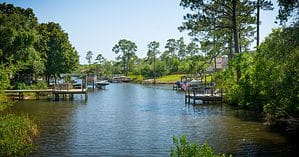Along the coastline of Rhode Island, Narragansett Bay’s historic towns blend with the majesty of the Atlantic Ocean. Narragansett Bay is a coastal plain estuary, featuring cities like Providence, Newport, and Cranston along its shores. This beautiful bay has a maximum depth of 184 feet (56 m) and holds the secrets of the maritime history that has shaped its shores for centuries. Come along as we discover Narragansett Bay and its environs.
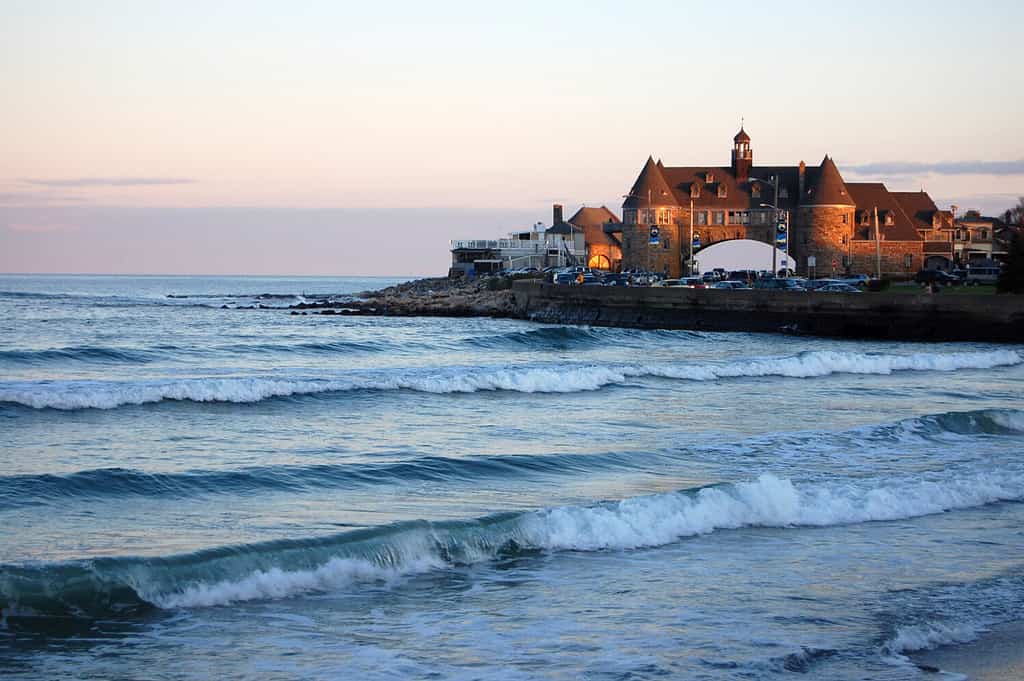
How deep is Narragansett Bay?
The bay has a maximum depth of 184 feet (56 m).
©Laura Stone/Shutterstock.com
Narragansett Bay at a Glance
| Metirc | Statistic |
|---|---|
| Name: | Narragansett Bay |
| Location: | Rhode Island, USA |
| Average Depth: | 26 feet (7.8 meters) (approximate) |
| Maximum Depth: | 184 feet (56 meters) (approximate) |
| Surface Area: | 147 square miles (380 km²) |
| Volume: | 706 billion gallons (2.7 billion m³) |
| Shoreline: | 256 miles (412 kilometers) |
Depth and Description
Narragansett Bay has varying depths depending on the area. The bay’s average depth is approximately 26 feet (7.8 m). However, the bay can reach depths of up to 184 feet (56 meters). This is particularly true in the east passage off of Castle Hill, which is quite deep. The depth also varies due to factors like tides, currents, and erosion. Narragansett Bay is classified as a coastal plain estuary. Coastal plain estuaries form in areas where sea level rise inundates river valleys that were once connected to the ocean. Narragansett Bay is a prime example of this type of estuary. Coastal plain estuaries like Narragansett Bay are characterized by their wide and relatively shallow depth, with gently sloping sides. The original river valleys were formed by freshwater rivers and streams. Over time, the ocean flooded these valleys, creating a connection between the river systems and the open sea.
These estuaries have fluctuating salinity due to the mixing of freshwater from rivers and saltwater from the ocean. The salinity levels vary depending on factors like tidal influence, freshwater inflow, and seasonal changes. Tides play a significant role in coastal plain estuaries. The rise and fall of tides cause water to flow in and out of the estuary. This leads to the mixing of saltwater and freshwater.
Coastal plain estuaries provide a variety of habitats, including tidal flats, salt marshes, and mudflats. These habitats support a wide range of plant and animal species that have adapted to the changing salinity and water levels.
History
Narragansett Bay has a long and storied history. The bay provided a safe harbor for ships and was a hub for maritime trade and commerce, throughout the colonial period. Newport, in particular, was a major colonial port. The bay played a role in trade between New England, Africa, and the Caribbean. Narragansett Bay was a focal point during the American Revolution. The British occupied Newport from 1776 to 1779, using it as a base of operations.
Narragansett Bay’s waterways provided a transportation route for goods and resources when textile mills and factories began springing up along its shores in the 19th century. The bay’s proximity to the Atlantic Ocean makes it a strategic location for naval activities. The U.S. Naval War College is located in Newport. Naval training exercises take place in the bay. Newport is also home to the Cliff Walk, a 3.5 mile (5.6 km) public access walkway along the shores of Narragansett Bay. The walk offers stunning views of the water as well as a mix of old and new waterfront mansions.
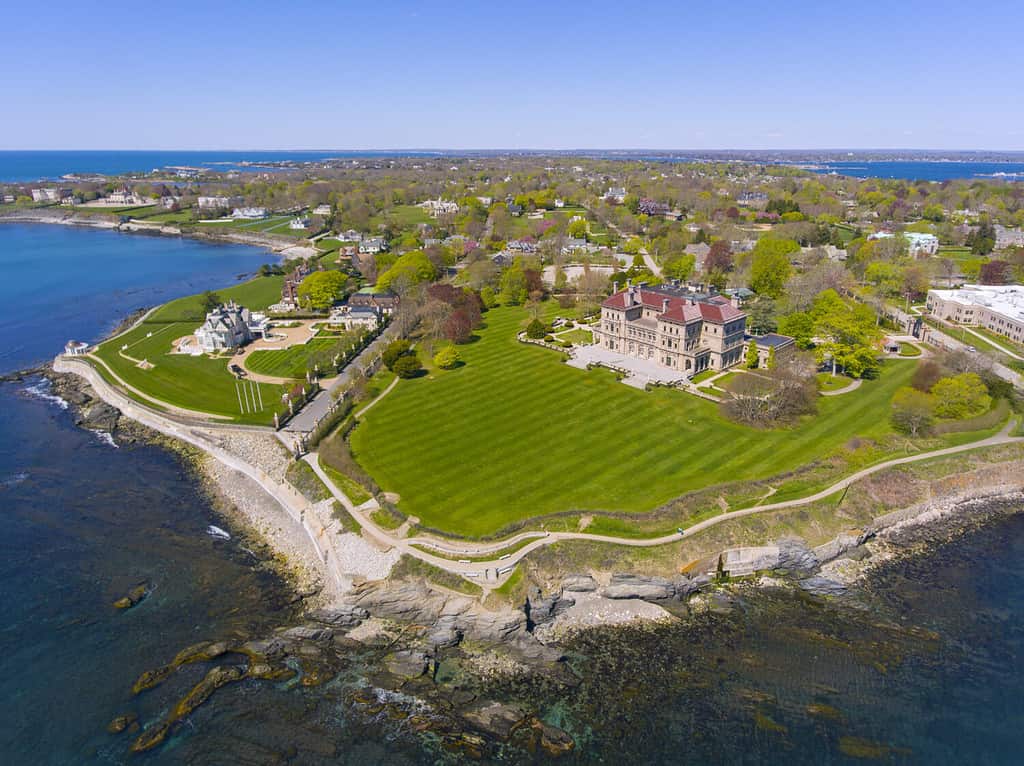
The largest and grandest of Newport’s summer cottages,
The Breakerswas built for the Vanderbilt family.
©Wangkun Jia/Shutterstock.com
What is a Bay?
A bay is a body of water that is partially surrounded by land and is connected to a larger body of water, typically an ocean or sea. Bays can vary in size and shape, ranging from small, sheltered indentations in the coastline to larger and more expansive. Bays often provide sheltered waters that are suitable for harbors, fishing, and recreational activities. Narragansett Bay is an important fishing area, supporting a variety of finfish and shellfish species that are harvested commercially. Fishermen in the region are engaged in harvesting finfish, and shellfish (clams, oysters, and quahogs). Lobster and crab fisheries are also present in the bay.
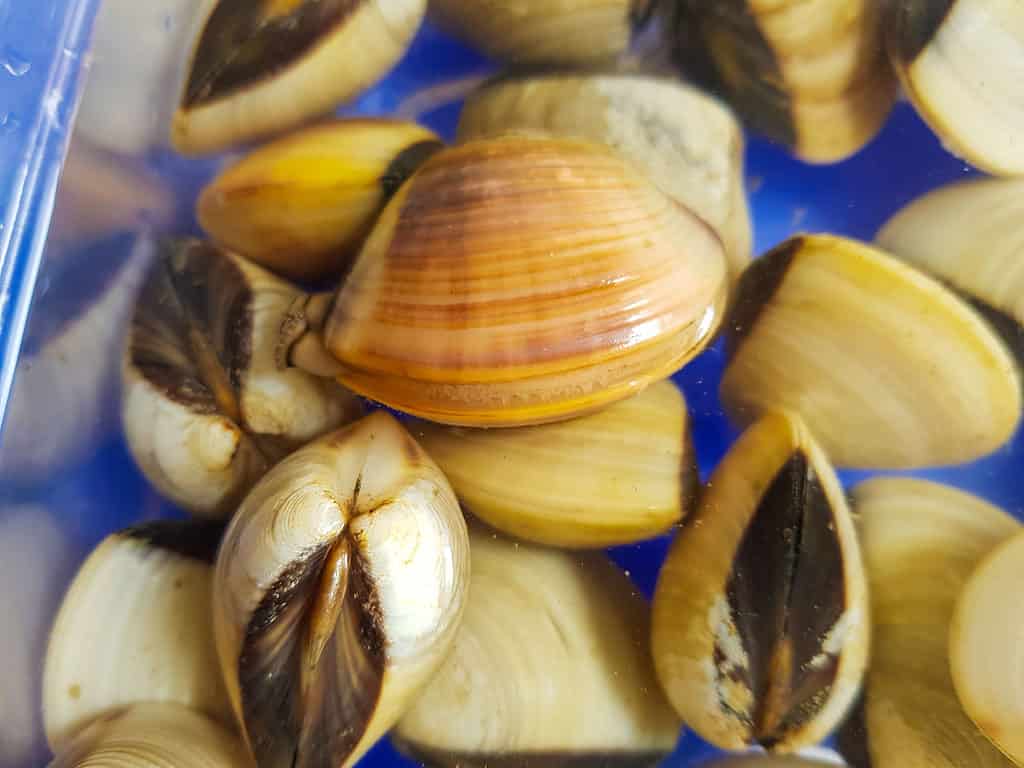
Quahog clams are often the target of the commercial fisherman’s nets.
©Lam Van Linh/Shutterstock.com
Rivers
Narragansett Bay is fed by several rivers and streams. These streams contribute fresh water to the bay.
- The Providence River is one of the primary rivers that flows into the Northern part of Narragansett Bay. It passes through the city of Providence and contributes a significant amount of freshwater to the bay.
- The Seekonk River is a tidal extension of the Providence River. It forms part of the border between the states of Rhode Island and Massachusetts and contributes freshwater to the bay’s ecosystem.
- The Pawtuxet River drains into the bay through the city of Warwick.
- While not a direct tributary of Narragansett Bay, the Blackstone River flows into the Seekonk River, which then feeds into the bay. The Blackstone River is an important part of the larger watershed that contributes to the bay’s water quality.
- The Taunton River flows into the Southeastern part of Narragansett Bay. It originates in Massachusetts before entering Rhode Island.
Islands
Narragansett Bay is home to over 40 islands of varying sizes. Some of these islands are well-known and have significant historical, cultural, and ecological value. A few notable islands in Narragansett Bay include Aquidneck Island (which contains the cities of Middletown, Newport, and Portsmouth), Conanicut Island (home to Jamestown), Prudence Island, Patience Island, and Dutch Island.
Rose Island
Rose Island is a small island located in Narragansett Bay, off the coast of Newport. The island features the Rose Island Lighthouse. The Rose Island Lighthouse was decommissioned in 1971 after a new bridge rendered it obsolete. However, volunteers formed the Rose Island Lighthouse Foundation to restore and maintain the lighthouse. Today, the Rose Island Lighthouse Foundation operates as a living museum and educational center. Visitors can take guided tours of the lighthouse and learn about its history. The island offers a glimpse into what life was like for lighthouse keepers and their families.
The Rose Island Lighthouse Foundation also offers guests the opportunity to stay in the restored keeper’s quarters. From April 01-October 31, the keeper’s quarters are available by reservation. Those lucky enough to secure a spot get to experience the tranquility of the island at night. Staying overnight on Rose Island provides an opportunity to enjoy the island’s natural beauty and the charm after hours. Rose Island is accessible by private boat or by taking a ferry from Newport. The ferry service provides transportation to and from the island during the tourism season.
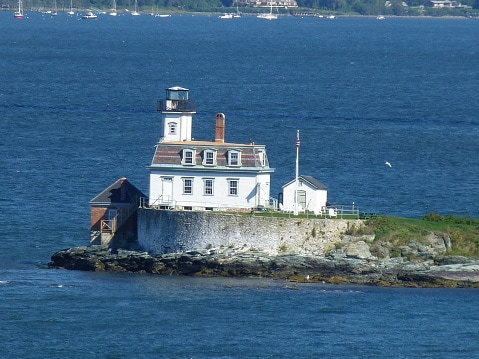
Guests have the opportunity to stay in the restored keeper’s quarters from April 01- October 31.
©LindaTancs/iStock via Getty Images
Play on the Bay
Narragansett Bay provides the space for a plethora of activities. The bay’s expansive reach serves as a sailing haven, attracting both seasoned sailors and beginners eager to catch the wind in their sails. Narragansett Bay shines through events like the America’s Cup, where sleek yachts race against the backdrop of the bay’s scenic shores. Recreational fishing is a cherished pastime on the bay. The bay offers a variety of fishing opportunities, from casting lines off piers and rocky shores to venturing out on boats. Anglers can target species like striped bass, bluefish, and flounder. From the shore or setting sail on its tranquil waters, Narragansett Bay provides the ideal environment for anglers of every stripe.
For music lovers, the renowned Newport Jazz Festival is not to be missed. This annual music festival has been a fixture on the bay since 1954. A decade later, in 1965, The Newport Folk Festival came along. It was at this festival that Bob Dylan famously went electric. More recently, family-friendly fare like Movies on the Beach and Food Trucks at the Beach have joined these traditional events.
The photo featured at the top of this post is © iStock.com/Paul Hamilton
Thank you for reading! Have some feedback for us? Contact the AZ Animals editorial team.






